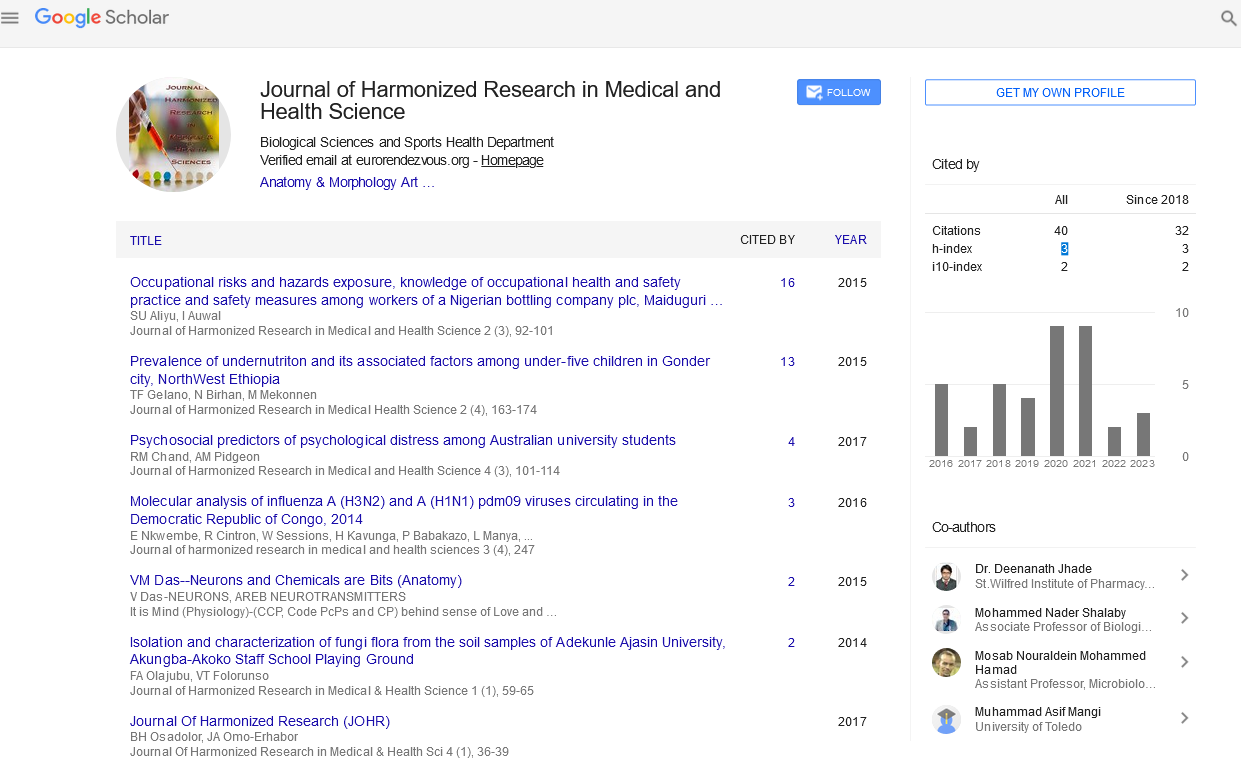Perspective - (2022) Volume 9, Issue 3
PURPOSE AND APPLICATION OF VETERINARY MEDICINE
Charles Terry*Received: Aug 05, 2022, Manuscript No. JHRMHS-22-77122; Editor assigned: Aug 08, 2022, Pre QC No. JHRMHS-22-77122 (PQ); Reviewed: Aug 23, 2022, QC No. JHRMHS-22-77122; Revised: Aug 30, 2022, Manuscript No. JHRMHS-22-77122 (R); Published: Sep 07, 2022, DOI: 10.30876/2454-5384.22.9.137
Description
The field of medicine known as veterinary medicine is focused on the prevention, control, diagnosis, and treatment of illness, disorders, and damage in animals. Additionally, it covers animal husbandry, breeding, nutrition research, and product development. The scope of veterinary medicine is broad, encompassing all domesticated and wild animal species, as well as a large spectrum of ailments that may impact various species. Numerous people practise veterinary medicine, both under professional supervision and without it. A veterinary doctor typically oversees professional care, but paraveterinary staff members like veterinary nurses or technicians may also play a role. Other paraprofessionals with particular expertise, such as animal dentists or physiotherapists, as well as species-relevant positions, like farriers, can supplement this. Veterinary science benefits human health through the monitoring and management of zoonotic diseases, food safety, and human applications via medical research. They contribute to the preservation of both the food supply and mental health by ensuring the health and longevity of livestock. Veterinary scientists frequently collaborate with epidemiologists and other health or natural scientists, depending on the type of employment. Animal welfare is often a requirement for veterinarians in terms of ethics.
premodern era
According to archaeological evidence in the shape of a cow skull on which trepanation had been done, Neolithic humans were performing veterinary procedures. The earliest existing account of veterinary medicine is found in the Egyptian Papyrus of Kahun.
Early Indian veterinary literature can be found in the Shalihotra Samhita, which dates back to the time of Ashoka. Asoka’s decrees stated: “King Piyadasi made two types of medicine available: medication for people and medicine for animals, everywhere. He gave the order to purchase and grow medicinal plants where they weren’t already available for humans and animals. A collection of hippiatrics from the fifth or sixth centuries AD is known as Hippiatrica. Horses were often the focus of the early attempts to organise and control the profession of treating animals because of their economic importance. Horseshoeing and the broader practise of “horse doctoring” were integrated by farriers in the mediaeval ages. The treatise of Ibn Akh Hizm is the source of the Arabic tradition known as Bayara, or Shiyt al-Khayl. Concerned about the subpar care provided to horses in the city, the Lord Mayor of London asked all farriers working within a 7-mile radius of the City of London to organise into a “fellowship” in order to standardise and enhance their procedures in 1356. In the end, this resulted in the founding of the Worshipful Company of Farriers in 1674. Anatomia Del Cavallo, a work by Carlo Ruini, was released in 1598. It was the first in-depth study of a nonhuman species’ anatomy.
Establishment of profession
Claude Bourgelat established the first veterinary college in Lyon, France, in 1762. According to Lupton, Bourgelat committed his attention to looking for a cure after seeing the havoc that the cow epidemic was causing to the French herds. This led to the founding of a veterinary college in Lyon in 1761, from which he sent students to fight the epidemic. Within a short period of time, the plague was stopped and the health of livestock was restored thanks to veterinary science and art’s contribution to agriculture. In the 18th century, the school quickly gained a reputation on a global scale, and its instructional approach drew from the sciences of comparative anatomy, natural history, and human medicine that were already established. In order to advance both agriculture and industry, the Odiham Agricultural Society was established in England in 1783 and was critical in establishing the veterinary profession in Britain. Thomas Burgess, a founder member, started to champion animal welfare and push for more compassionate care of sick animals. The group decided to “promote the study of farriery upon logical scientific principles,” the group decided during a meeting in 1785.










